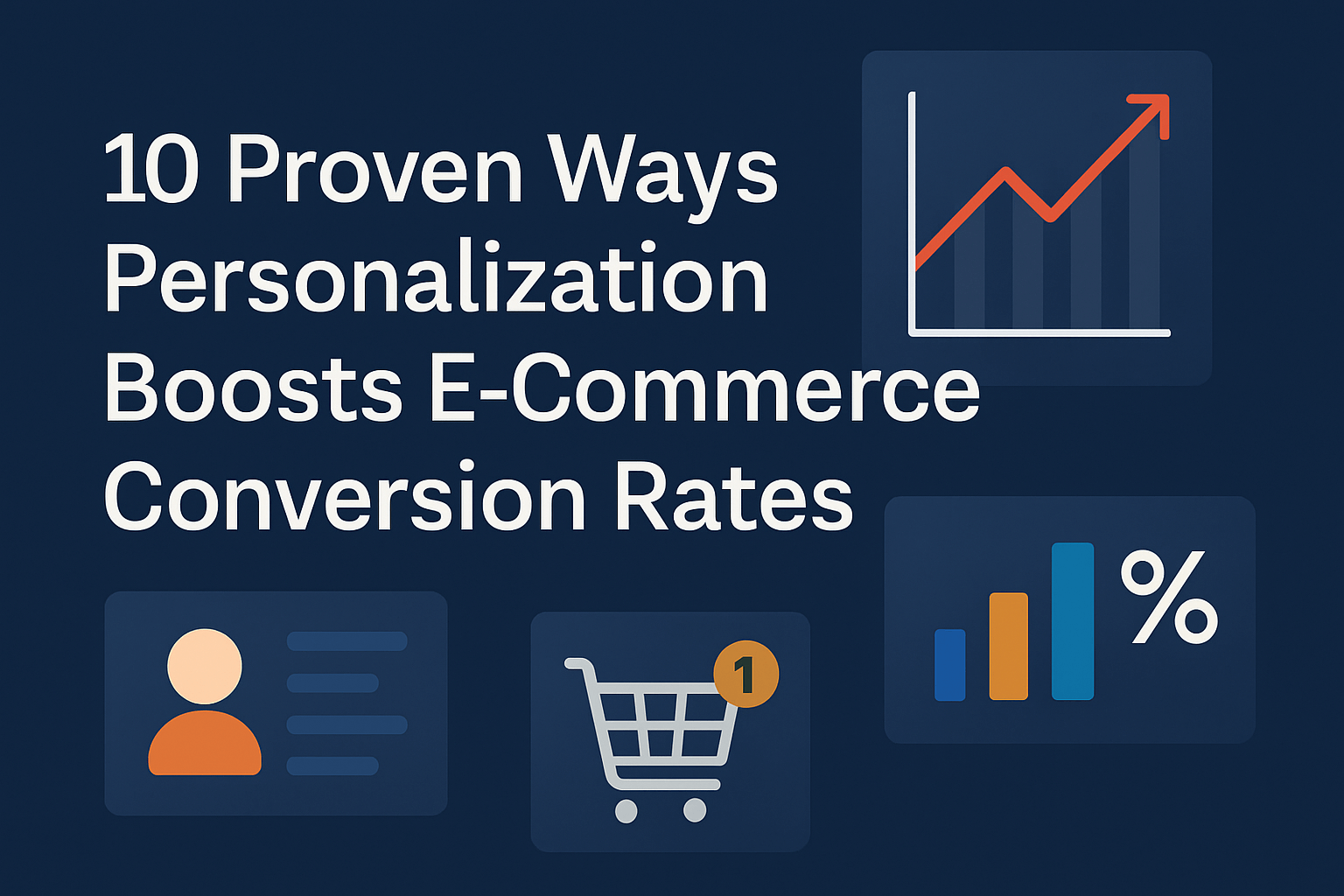Create a winning ecommerce strategy
In the rapidly evolving world of digital commerce, having a clear and effective ecommerce strategy is essential for online businesses aiming to succeed in a competitive market. With the rise of digital retail, consumers are now more inclined to shop online, making it vital for e-commerce companies to craft a strategy that addresses customer needs while maximizing revenue and growth.
In this article we break down key elements of a successful ecommerce strategy and provide actionable steps for creating a digital commerce strategy that drives results.
1. Understand your market and define clear goals
The foundation of any strong ecommerce strategy is a thorough understanding of your target market and a clear set of business goals. Start by analyzing your customers’ demographics, preferences, and shopping behaviors. Use this information to define key performance indicators (KPIs) that align with your growth objectives. Common goals for ecommerce businesses include:
- Increasing sales conversion rates: Optimizing the path to purchase to increase the percentage of visitors who become customers.
- Improving customer retention: Building customer loyalty and encouraging repeat purchases.
- Expanding market reach: Attracting new customers in untapped markets through strategic marketing and product offerings.
Clearly defined goals and KPIs guide every aspect of your ecommerce business strategy, from marketing efforts to site optimization and product development.
2. Develop a customer-centric approach
With increasing competition in the ecommerce space, offering a customer-centric experience is crucial. This means focusing on providing seamless, enjoyable, and personalized experiences that encourage customer loyalty. Here are some ways to integrate a customer-first mindset into your digital commerce strategy:
- Personalize the User Experience: Personalization can include product recommendations, tailored content, or personalized email marketing. Use customer data to deliver relevant suggestions, offering a unique experience for each visitor.
- Implement robust Customer Service: Make sure customers can easily get help when they need it. Offering 24/7 chat support, comprehensive FAQs, and quick email responses can significantly improve the shopping experience.
- Create valuable content: Offering educational content or advice that resonates with your audience builds trust and engagement. Blog posts, how-to guides, and product tutorials can enhance the customer journey and position your brand as a go-to resource.
3. Optimize for mobile shopping
With mobile devices accounting for a significant portion of online sales, optimizing for mobile is critical for any ecommerce business strategy. A mobile-friendly site not only meets customers’ expectations but also impacts search engine rankings. Here are some tips for mobile optimization:
- Use responsive design: Ensure your website design adapts to different screen sizes for an optimal viewing experience across devices.
- Simplify navigation: Mobile users prefer fast, simple browsing. Make navigation menus easy to find and keep page load times as short as possible.
- Implement mobile payment options: Providing quick, secure mobile payment methods like Apple Pay or Google Wallet reduces friction and enhances the mobile shopping experience.
4. Leverage data and analytics for decision making
Data-driven decision-making is at the heart of a strong ecommerce strategy. From tracking customer behavior on your website to analyzing the effectiveness of marketing campaigns, data insights allow you to refine and adjust your strategy in real-time.
- Utilize website analytics: Tools like Google Analytics provide invaluable insights into customer journeys, identifying high-traffic pages, drop-off points, and popular products.
- Monitor conversion rates: Use tools that track where users abandon the buying process to understand what might be causing them to leave without purchasing.
- A/B test regularly: A/B testing helps determine which website elements or campaigns are most effective. Test different CTAs, page layouts, and headlines to see what resonates most with your audience.
Data can transform an ecommerce business strategy by informing more precise marketing, product, and content decisions that drive conversions.
5. Enhance your digital marketing efforts
A well-rounded digital commerce strategy should include a multi-channel digital marketing plan to attract and engage customers across various platforms. Here’s how to get started with key digital marketing channels:
- Search Engine Optimization (SEO): SEO increases your online visibility by helping your website rank higher in search engine results. Optimize product pages, blogs, and landing pages with relevant keywords to attract organic traffic.
- Email marketing: Email remains one of the most effective channels for engaging customers and driving conversions. Use segmented lists to send personalized promotions, product recommendations, and updates based on past purchases or browsing behavior.
- Social media advertising: Social media platforms are ideal for reaching new audiences and engaging your existing customers. Paid ads, influencer partnerships, and organic posts can all drive traffic and awareness for your ecommerce brand.
- Content marketing: High-quality content helps attract new customers and improve brand loyalty. Publish blogs, videos, and how-tos that add value to your audience’s shopping experience, reinforcing your brand as a knowledgeable authority.
6. Implement a flexible pricing and promotions strategy
Pricing plays a significant role in consumer decision-making. In a competitive ecommerce landscape, flexible pricing and strategic promotions are essential for attracting and retaining customers. Why not try some of these:
- Seasonal discounts and flash sales: Offering time-sensitive discounts encourages quick purchases and attracts deal-seekers.
- Loyalty programs: A loyalty program rewards repeat customers, increasing retention. Offer discounts, points, or exclusive access to loyal customers to encourage repeat purchases.
- Dynamic pricing: Use dynamic pricing to adjust prices in real-time based on demand, competition, or other factors. This strategy can optimize profit margins while keeping your pricing competitive.
7. Streamline the checkout process
A complicated checkout process is a common reason for cart abandonment. Simplifying the checkout process can significantly improve conversion rates and lead to higher sales. Here are some tips:
- Reduce form fields: Keep the checkout form short and request only essential information.
- Offer guest checkout options: Forcing customers to create an account can discourage them from completing a purchase. Providing a guest checkout option removes this barrier.
- Use clear Calls-to-Action (CTAs): Ensure your CTAs are easy to find and communicate the next steps clearly.
A smooth, user-friendly checkout experience is essential to any ecommerce business strategy aimed at maximizing sales.
8. Prioritize customer retention
Customer acquisition costs can be high, making customer retention an essential component of a sustainable ecommerce strategy. Focus on retaining customers with these methods:
- Follow-up with post-purchase emails: Send a thank-you email after a purchase and recommend related products to encourage future purchases.
- Implement a loyalty program: Reward frequent customers with discounts or exclusive offers to keep them coming back.
- Encourage customer feedback: Ask for reviews and feedback to show that you value their opinion. Positive reviews build social proof and attract new customers, while constructive feedback can guide improvements.
You’re all set for a successful strategy
Building a successful ecommerce strategy requires a mix of understanding your market, focusing on customer experience, and leveraging data to optimize and grow. By addressing the key areas we’ve discussed, you can build a digital commerce strategy that not only attracts customers but also drives conversions and builds long-term loyalty.
Implementing a well-rounded approach allows your online business to stand out as one of the high converting websites in a competitive market, ultimately leading to sustained growth and profitability.
Get started with ConversionWax now
-

10 Proven Ways Personalization Boosts E-Commerce Conversion Rates
-

How to increase your website sales
-

Mastering ecommerce product page optimization
-

Ecommerce content optimization - strategies to drive conversions
-

Product page SEO best practices
-

Create a winning ecommerce strategy
-

Ecommerce optimization - strategies to boost your online store's performance
-

Ecommerce best practices - how to enhance performance, attract customers, and grow sales
-

How to increase online sales - proven strategies to boost your business
-

How to market a product online - proven strategies for success

